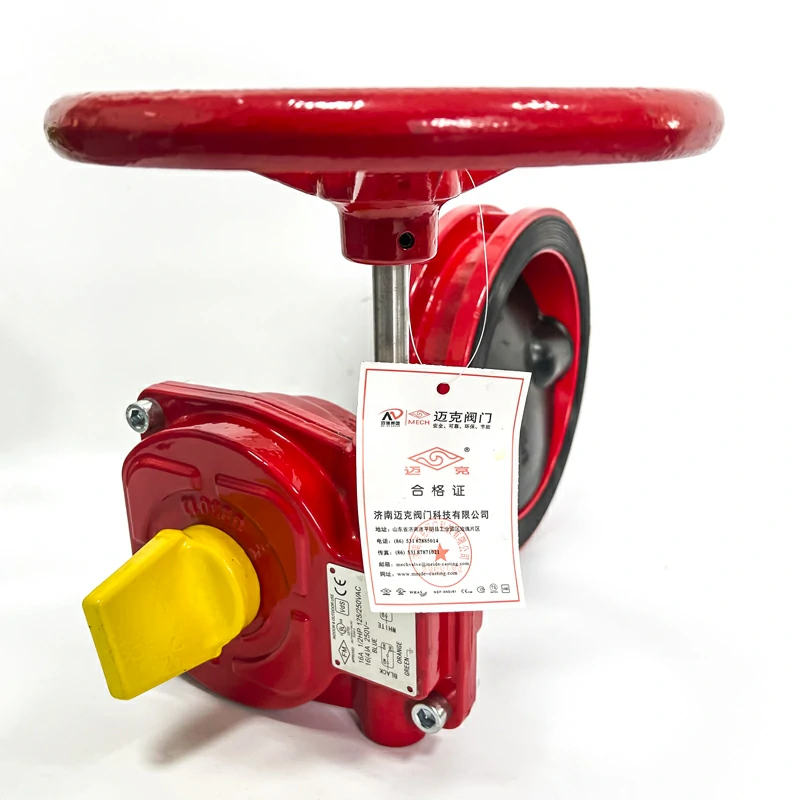adannaaollinsowenn
Member
- Se incorporó
- 13 Octubre 2023
- Mensajes
- 19
- Reaction score
- 0
- Puntos
- 6
- Edad
- 39
Maintaining and servicing wafer type butterfly valves is essential to ensure their reliable performance and extend their service life. Here are some key maintenance and preventive measures:
1. Regular Inspection:
- Conduct routine visual inspections of the valve and its components to check for signs of wear, corrosion, or damage. Inspect the valve seat, disc, shaft, and sealing materials.
- Depending on the valve design, ensure that all moving parts, including the shaft and stem, are adequately lubricated. Lubrication prevents excessive wear and ensures smooth operation.
- Periodically flush the valve to remove debris or buildup that could impede its functionality. Ensure that the valve and pipeline are free from contaminants that might affect sealing.
- Check and tighten all fasteners, bolts, and nuts as part of regular maintenance. Loose connections can lead to leakage or reduced performance.
- Examine the valve seat for wear, erosion, or damage. Replace the seat if necessary. Damaged seats can lead to leakage and reduced sealing.
- Inspect the disc for damage, wear, or deformation. A damaged disc can affect the valve's ability to seal properly or control flow.
- Examine the shaft for signs of wear or corrosion. Ensure that the shaft's movement remains smooth and unimpeded.
- If the valve utilizes gaskets or sealing materials, periodically check and replace them as needed to maintain a tight seal. Use compatible gasket materials.
- If the valve is actuated, regularly inspect the actuator and its controls. Ensure that the actuator operates correctly and that the control system is functional.
- Periodically calibrate the valve to confirm that it opens and closes as specified. Test the valve's performance to ensure it meets flow control requirements.
- Apply preventative measures, such as installing filters upstream to prevent debris from entering the valve, or using valve positioners for precise control and extended service life.
- Keep a stock of replacement parts on hand, such as seals, gaskets, and O-rings, for quick repairs in case of wear or damage.
- Adhere to the manufacturer's maintenance guidelines and recommendations, as they often provide specific instructions for each valve model.
- Ensure that the valve is suitable for the specific environmental conditions of its installation. Wafer Type Butterfly Valve Suppliers Corrosion-resistant coatings or materials may be necessary for harsh environments.
- Train maintenance personnel on proper inspection and maintenance procedures for wafer type butterfly valves. Ensure they understand the specific requirements of the valves in use.
- Comply with industry standards and regulations relevant to your application and region to ensure the safe and efficient operation of wafer type butterfly valves.
What are the key advantages and limitations of using wafer type butterfly valves in industrial and commercial fluid control systems?
Wafer type butterfly valves are commonly used in industrial and commercial fluid control systems, and they offer several advantages and have some limitations:
Advantages:
- Cost-Effective: Wafer type butterfly valves are often more affordable than other valve types, making them a cost-effective choice for a wide range of applications.
- Lightweight: They are relatively lightweight, which simplifies installation and reduces stress on piping systems.
- Compact Design: Wafer type valves have a compact design, which means they require less space compared to other valve types, making them suitable for installations with limited space.
- Quick Operation: Butterfly valves can be opened or closed rapidly, making them ideal for applications that require fast response times.
- Low Pressure Drop: They typically have a lower pressure drop compared to some other valve types, which is advantageous for maintaining fluid flow efficiency.
- Excellent Flow Control: Butterfly valves can offer good flow control capabilities, and they can be used for throttling applications with appropriate valve designs.
- Bi-Directional Sealing: Some wafer type butterfly valves are designed to provide a bi-directional seal, ensuring leak-tight closure in both flow directions.
- Versatility: They can handle a variety of fluids, including liquids, gases, and slurries, depending on the materials of construction and sealing elements.
- Low Maintenance: Butterfly valves have fewer moving parts, which often leads to lower maintenance requirements and costs.
- Bubble-Tight Seal: In certain applications, wafer type butterfly valves can provide bubble-tight shutoff, preventing gas or fluid leakage.
- Limited Pressure and Temperature Range: Wafer type butterfly valves may not be suitable for extremely high-temperature or high-pressure applications. Specialized designs may be required for these conditions.
- Sealing Issues: In some applications, especially where a bi-directional seal is essential, butterfly valves may not provide the level of sealing required, leading to potential leakage.
- Throttling Limitations: While suitable for many flow control applications, butterfly valves may have limitations when precise throttling is needed.
- Cavitation and Erosion: In applications with high flow velocities or rapid changes in flow direction, cavitation and erosion can occur, potentially damaging the valve and reducing its service life.
- Material Compatibility: The materials used in butterfly valves must be carefully selected to ensure compatibility with the fluids being handled.
- Weight and Size: While being relatively lightweight and compact, larger diameter butterfly valves can be heavy and may require additional structural support.
- Noise: In some cases, the rapid operation of butterfly valves can generate noise, which may be undesirable in certain applications.
- Directional Flow: The pressure drop may vary depending on the direction of flow through the valve, which can affect system performance.
- Sealing Element Wear: The sealing element (typically a rubber or elastomeric seat) can wear over time, which may necessitate periodic replacement.






